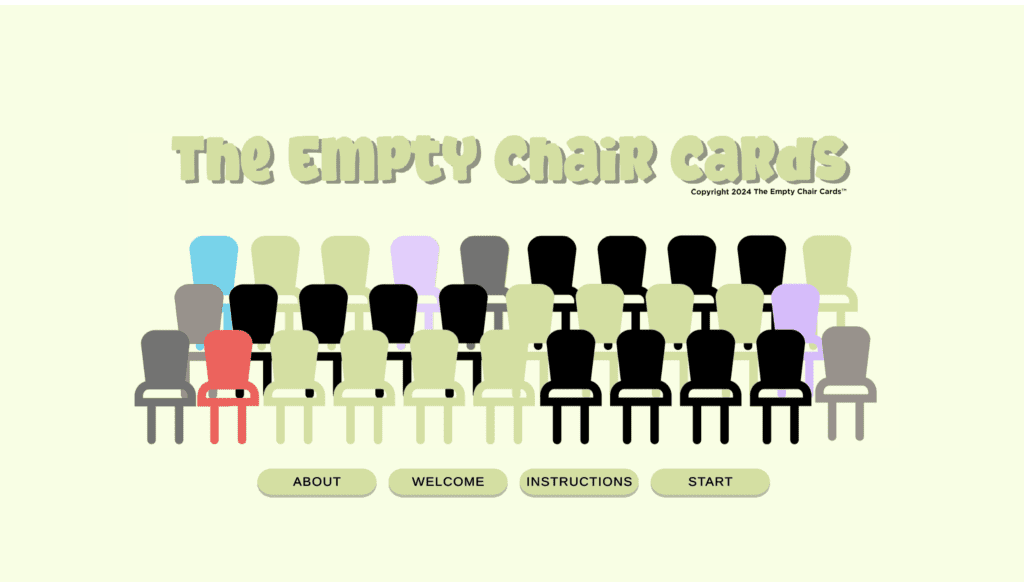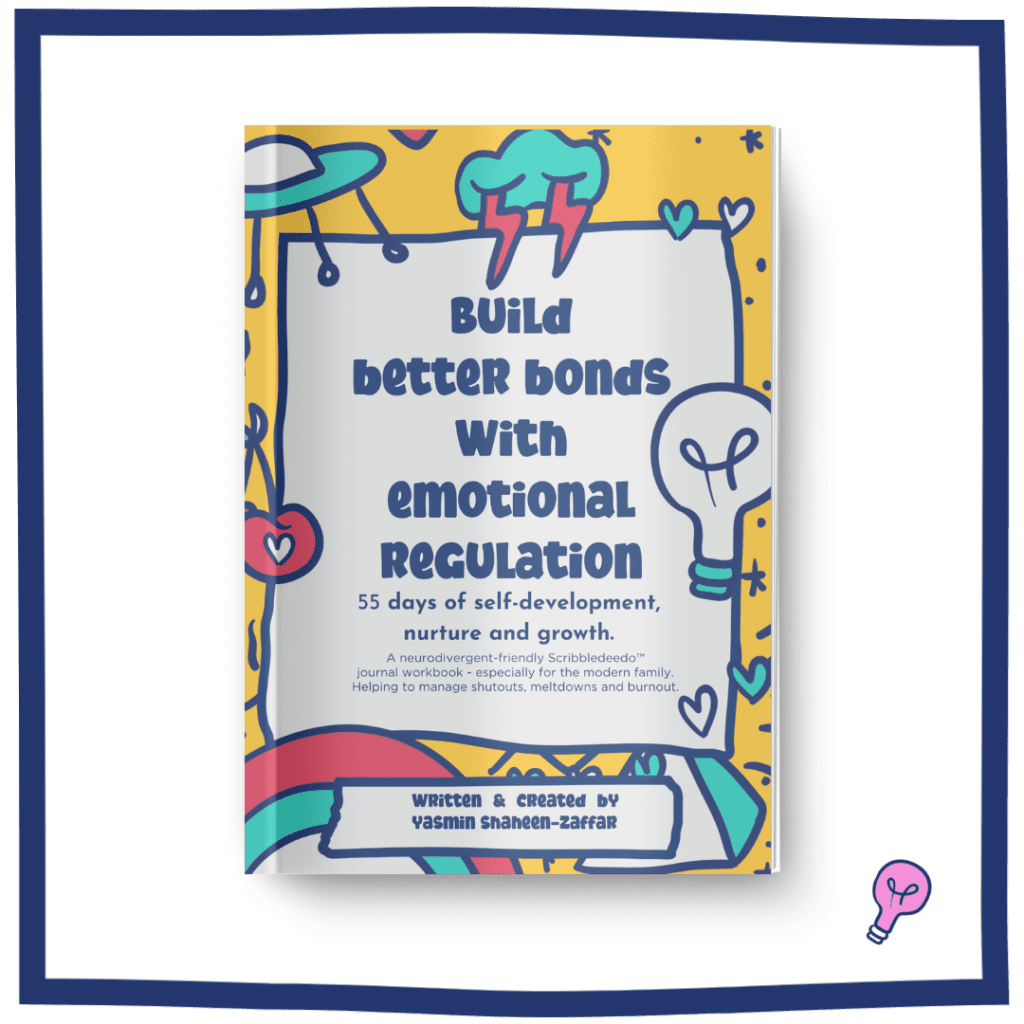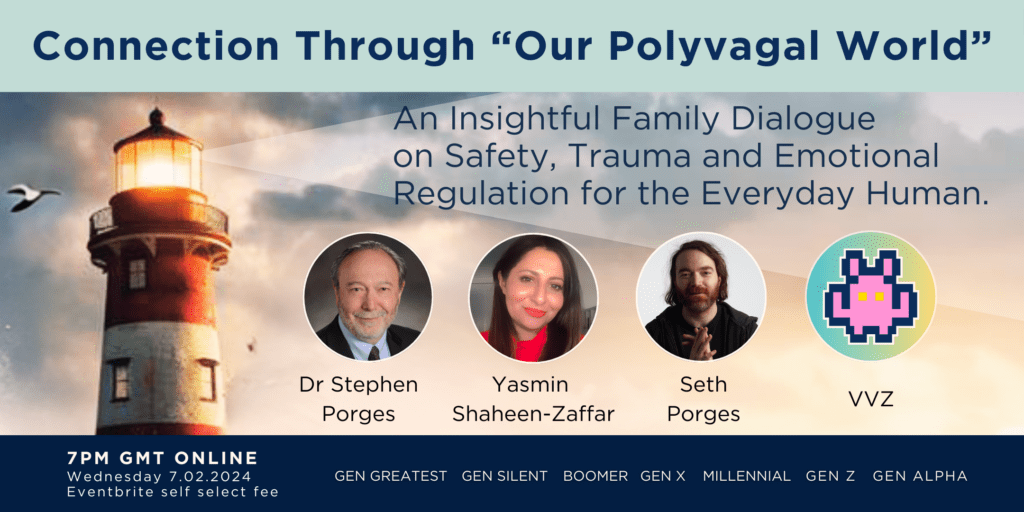Instructions
- It is best used on a desktop or laptop in sessions with a mouse or trackpad.
- Ipad is a possibility in landscape mode using touch screen but can be a little sticky.
So far I know it works on all browsers. If it is not working on your browser please drop me a message at [email protected]

The Empty Chair Cards™
The Empty Chair Cards Are Inspired by the Gestalt Empty Chair Technique and created by Yasmin Shaheen-Zaffar.
Gestalt is a type of therapy which was developed by Fritz and Laura Perls and others in the 1940’s. Gestalt psychology, is a therapy that takes into account the whole individual and its focus is on the the obstacles which get in the way of the present.
The primary aim of this therapy is to help clients become more aware of what they are experiencing in the present moment. In Gestalt therapy, awareness is seen as the primary mechanism for change.
First before we go further it is important to remember Gestalt therapy can often bring out intense reactions and emotions which may not be suitable for all individuals. This form of therapy may also not be ideal for persons who are already emotional flooded.
The intense emotional responses that can be evoked can be harmful to the client if misused or abused by an inexperienced counsellor or therapist (Melnick et al., 2005).
It is essential for the therapist to judge whether this technique is suitable for their client’s needs.
Unfolding the Journey of the “Empty Chair Cards™”: A Therapist’s Tale
Before I ever realised my calling as a counsellor, trainer, and mentor, I was on a unique adventure: amassing a collection of photographs featuring empty chairs. Today, my collection showcases hundreds of such images! This hobby was initially fuelled by my love for photography and travel.
However, upon introspection, I recognise that a series of bereavements I experienced during my early teenage years played a significant role. The empty chair, I believe, holds a personal significance for me, symbolising loss and absence. Yet also an invitation for new beginnings. I think this is something many of us can relate to in our own different ways.
While training to become a counsellor, I stumbled upon the Gestalt Empty Chair Technique, which immediately resonated with me. The technique was potent and impactful. However, I also found it rather confrontational, almost intrusive. Imagine being asked to engage in a dialogue with an empty chair – it could be perceived as quite… peculiar, weird and a bit strange.
Empathising with the feelings of discomfort or strangeness one might experience while talking to an ’empty chair’, made me reflect on my own journey. I remembered my days of extreme shyness and how far I had come since then.
This led to a pertinent question – could I find a softer, less confrontational method of utilising the Empty Chair Technique? A method that could facilitate discussions about conscious as well as unconscious thoughts without intimidating or frightening clients?
This line of thought led to the creation of ‘The Empty Chair Cards’. Initially, I perceived these cards as a precursor to actual empty chair work. However, I soon realised their inherent power. They served as a gentle yet effective tool to facilitate meaningful conversations and self-reflection. I hope using these cards brings you as much joy and insight as I experienced while creating them. And remember, it’s perfectly fine to find power in unconventional places – even if it’s an empty chair.
Note: The Empty Chair Cards™ are intended to enhance therapeutic work and not replace professional counselling or provide crisis support.
- Voice to the Unspoken: The cards can be used to give a voice to emotions or issues that have been silenced or ignored.
- Symbolic Representation: Clients can choose a card that represents a person they wish to communicate with or a part of themselves that needs attention.
- Emotional Exploration: Discuss why a certain card resonates with the client. Explore the emotions or feelings that are triggered by the selected card.
- Backdrop Discussion: Discuss the background of the chosen card. Explore if the client would prefer a different backdrop and why. What significance does the background hold for them?
- Mix and Match: Clients can combine elements from different cards. For instance, they can place a chair from one card against the background of another.
- Size and Position: Discuss if the client would change the size or position of the chair on the card. What would these changes symbolize?
- Visualising Change: Clients can use two cards to represent their current state and desired state. This can spark conversations about the changes needed to transition from one state to another.
- Therapeutic Journey: Use the cards to depict the journey of therapy. Over several sessions, discuss if there’s been a shift in the client’s feelings, thoughts, or emotions.
- Inner Work: The cards can be used to facilitate inner child work or inner critic work. They can serve as visual aids to represent these internal parts of the self.
- Therapist and Client Uniqueness: Each therapist-client pair is unique, and so is their way of using these cards. Encourage clients to explore new ways to use the cards that best suit their therapeutic journey.
Remember: these are just suggestions. The true potential of ‘The Empty Chair Cards’ lies in the unique ways each therapist and client choose to use them.

